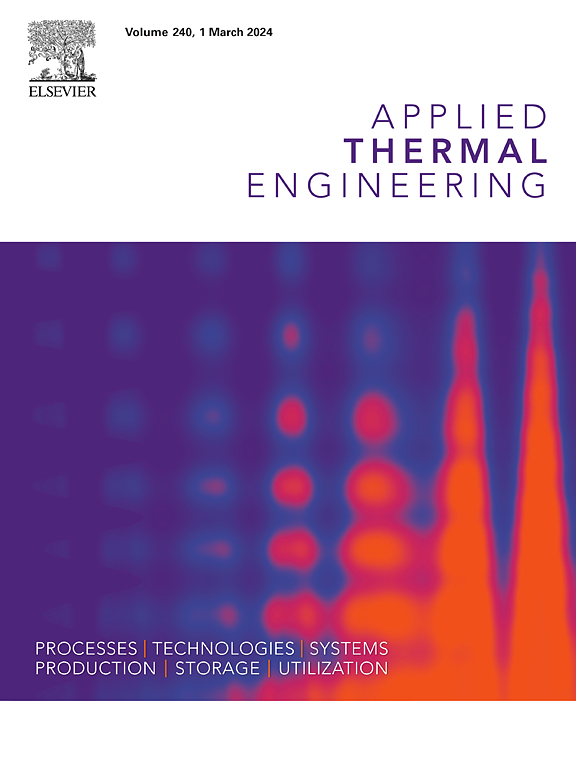A bionic lotus-leaf-shaped evaporator with zonal wettability and high salt resistance
IF 6.9
2区 工程技术
Q2 ENERGY & FUELS
引用次数: 0
Abstract
Interfacial solar vapor generation (ISVG) is a promising and environmentally friendly desalination strategy to solve the global water crisis. However, producing a long-lasting evaporative system, which has effective salt resistance, heat management and solar energy utilization, remains a major challenge. Here, we propose a lotus-leaf-shaped carbon/cotton fabric-based evaporator with drainage strips (L-CCF/D). The lotus-leaf-shaped invert cone structure of the evaporator is designed to effectively localize heat to reduce heat losses and increase the times of light reflection to improve the utilization of solar energy. The drainage strips are introduced to form a zonal wettability to avoid salt crystals deposition, and draw out highly concentrated brine for long-lasted application. The designed evaporator has the evaporation rate of 2.45 kg m-2 h−1 in deionized water at a light intensity of 1 kW m−2, and also shows long-term stability in highly concentrated brine, which has the average evaporation rate of 2.17 kg m-2 h−1 in 10 wt% NaCl solution for 6 h. The evaporator has a fresh water yield of 8.05 kg m−2 in the outdoor experiment. This unique design with drainage strips ensures the long-term stability of the evaporator in actual seawater applications, providing a broad application prospect for solar water treatment.

具有区域润湿性和高耐盐性的仿生荷叶形蒸发器
界面太阳能蒸汽发电(ISVG)是解决全球水危机的一种有前途的环保脱盐策略。然而,生产一个持久的蒸发系统,具有有效的耐盐性,热管理和太阳能利用,仍然是一个主要挑战。在这里,我们提出了一个荷叶形状的碳/棉织物蒸发器,带有排水条(L-CCF/D)。蒸发器采用荷叶形反锥结构,有效地局部散热,减少热损失,增加光反射次数,提高太阳能利用率。引入排水带形成层状润湿性,以避免盐晶体沉积,并抽出高浓度盐水,以便长期使用。所设计的蒸发器在光强为1 kW m−2时,在去离子水中的蒸发速率为2.45 kg m-2 h−1,在高浓度卤水中也表现出长期稳定性,在10 wt% NaCl溶液中蒸发6 h,蒸发器的平均蒸发速率为2.17 kg m-2 h−1,室外实验中蒸发器的淡水产量为8.05 kg m−2。这种独特的带排水条的设计保证了蒸发器在实际海水应用中的长期稳定性,为太阳能水处理提供了广阔的应用前景。
本文章由计算机程序翻译,如有差异,请以英文原文为准。
求助全文
约1分钟内获得全文
求助全文
来源期刊

Applied Thermal Engineering
工程技术-工程:机械
CiteScore
11.30
自引率
15.60%
发文量
1474
审稿时长
57 days
期刊介绍:
Applied Thermal Engineering disseminates novel research related to the design, development and demonstration of components, devices, equipment, technologies and systems involving thermal processes for the production, storage, utilization and conservation of energy, with a focus on engineering application.
The journal publishes high-quality and high-impact Original Research Articles, Review Articles, Short Communications and Letters to the Editor on cutting-edge innovations in research, and recent advances or issues of interest to the thermal engineering community.
 求助内容:
求助内容: 应助结果提醒方式:
应助结果提醒方式:


